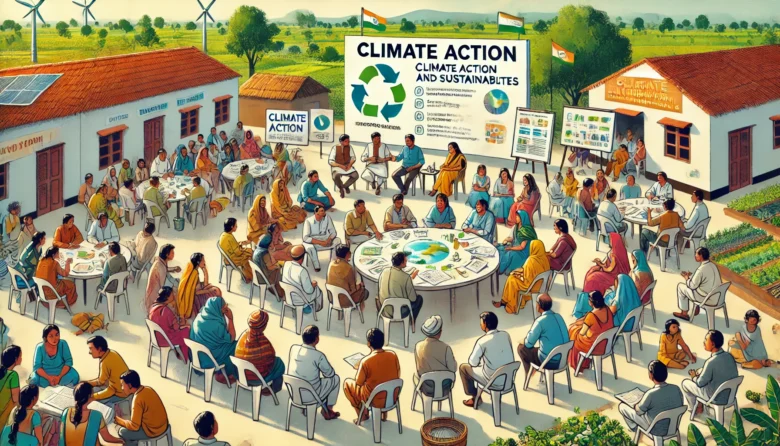Understanding the psychology of climate change communication is essential for effectively addressing one of the most pressing issues of our time. By learning how to convey the importance of climate action, we can inspire more people to participate in sustainable practices. In this blog, we’ll explore the psychological aspects of communicating about climate change and how we can engage the Indian public in meaningful conversations.
Why Communication About Climate Change Matters
Climate change presents a worldwide challenge impacting every individual. However, communicating its urgency and impact can be difficult. People often react differently to climate change messages based on their beliefs, values, and experiences. Understanding the psychology behind these reactions can help us tailor our communication strategies more effectively.
The Influence of Emotions on Climate Change Communication
Emotions play a significant role in how people perceive and respond to information about climate change. Fear, guilt, and hope are common emotions associated with climate change communication.
Fear
Messages that evoke fear about the future impacts of climate change can sometimes lead to denial or avoidance. While fear can motivate action, it must be balanced with positive messages offering solutions and hope.
Guilt
Guilt can make individuals feel responsible for environmental degradation. However, too much guilt can lead to disengagement. It’s important to frame messages that encourage positive behavior without overwhelming people with guilt.
Hope
Hope is a powerful motivator. By highlighting successful examples of climate action and emphasizing that individual efforts can make a difference, we can inspire people to take action.

Tailoring Messages to Different Audiences
Effective climate change communication requires understanding the audience. Different groups may have varying knowledge, concern, and willingness to act on climate issues.
Educating the Youth
Young people are often more open to messages about climate change and eager to take action. Educational institutions, such as schools and universities, are essential in teaching students about climate science and motivating them to champion sustainability.
Engaging Rural Communities
Rural communities in India are directly affected by climate change, especially through agriculture. Communicating the impacts of climate change on their livelihoods and offering practical solutions can resonate more deeply with these audiences.
Influencing Urban Residents
Urban residents may be more concerned about air pollution, heat waves, and rising energy costs. Highlighting how climate action can improve urban living conditions can make the message more relevant to this audience.
Using Stories and Personal Connections
People are more likely to respond to stories and personal connections than statistics and abstract concepts. Sharing stories of individuals and communities who have successfully implemented climate-friendly practices can make the issue more relatable and inspiring.
Leveraging Social Norms
Social norms significantly influence behavior. When people see that others in their community are taking climate action, they are likelier to do the same. Highlighting community initiatives and celebrating local climate heroes can create a sense of collective effort and responsibility.
The Power of Visual Communication
Visuals are a powerful tool in climate change communication. Images, infographics, and videos can make complex information more accessible and engaging. For example, showing the visible effects of climate change, such as melting glaciers or extreme weather events, can have a strong emotional impact.
Addressing Misinformation
Misinformation about climate change can hinder efforts to address the issue. It’s crucial to provide accurate, evidence-based information and debunk myths. Promoting critical thinking and media literacy helps individuals identify trustworthy sources and avoid misinformation.
How You Can Communicate Effectively About Climate Change
As individuals, we can all play a role in spreading awareness about climate change. Here are some tips for effective communication:
- Stay Informed: Stay updated with the most recent findings and advancements in climate science.
- Be Positive: Focus on solutions and positive actions that people can take.
- Use Simple Language: Steer clear of jargon and technical language; make sure to explain ideas in a manner that is easily understandable by everyone.
- Listen and Engage: Understand the concerns and perspectives of your audience and address them respectfully.
- Share Stories: Use personal anecdotes and success stories to make the issue relatable.
Conclusion
The psychology of climate change communication is a key factor in motivating people to take action. Understanding how emotions, social norms, and audience differences influence perceptions can create more effective messages that inspire positive change. Let’s work together to communicate the importance of climate action and build a sustainable future for India and the world.
Author’s Note:
Thank you for reading! Climate change is complex, but effective communication can make a big difference. Let’s continue to learn and share the message of sustainability with those around us.
G.C., Ecosociosphere contributor.




